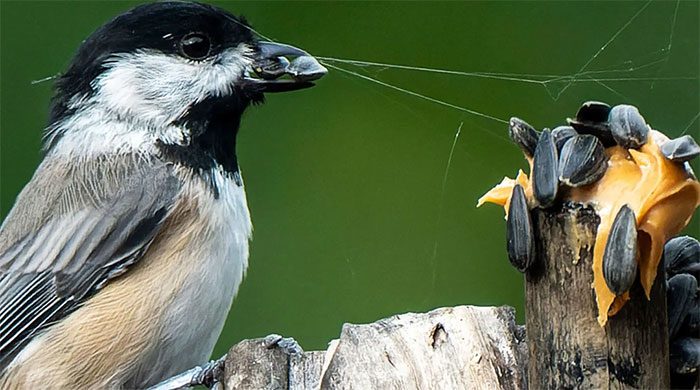A barcode appears in the brain of the Chickadee, helping them accurately locate their hidden food.
Similar to squirrels, Chickadees have a habit of hiding their food. However, how they manage to accurately find these hidden caches has long been a mystery to science.
A study published on March 29 in the journal Cell has revealed the secret behind this bird. It turns out that to locate their hidden food, Chickadees rely on a specific set of neurons located in the brain’s memory center to emit a brief activity.

The memory recording in Chickadees is referred to by researchers as the brain’s “barcode” system. (Photo: Getty).
The mechanism behind this is similar to how we use barcodes to encode and decode information. For Chickadees, they can retrieve information from memories stage by stage, allowing them to reconstruct specific events from the past.
Selmaan Chettih, a neuroscientist at Columbia University, noted that this type of memory poses a challenge when studying animals. “You can’t ask a mouse what memories it formed today,” Chettih shared. “It’s a painstaking and incredibly complex research journey.”
To study the memory of Chickadees, Chettih and his colleagues built a special setup, designed to recreate potential food hiding areas, including 128 artificial storage sites.
The research team then implanted small probing devices into the brains of five Chickadees to monitor the neuronal electrical activity, subsequently comparing this activity with detailed recordings of the birds’ locations and body behavior.
Through this, they discovered that whenever a Chickadee finds food where it has stored it, a brain wave appears, represented as a barcode.
At that point, the neurons in the Chickadee encode the presence and absence of food particles in the buffer, forming connections between three different patterns of neural activity: information encoding, location encoding, and type of seed encoding.
“When you recall specific events that occurred in the past, that fragment of memory is inseparable from the location where the event took place, or the time it occurred,” explained Kazumasa Tanaka, a neuroscientist at the Okinawa Institute of Science and Technology.
This is also the method scientists rely on to decode the mysteries of the Chickadee.
Selmaan Chettih believes that studying the “barcode” memory in Chickadees could provide us with new insights into how the brain and memory function.


















































